
All categories
Featured selections
Trade Assurance
Buyer Central
Help Center
Get the app
Become a supplier

(2374 products available)







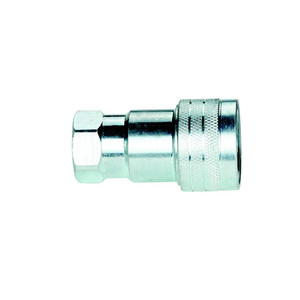
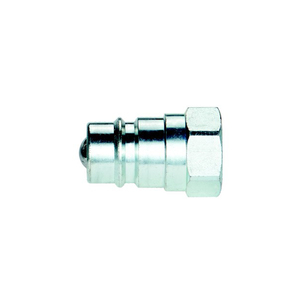
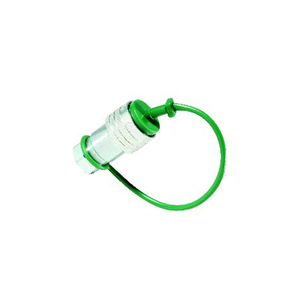





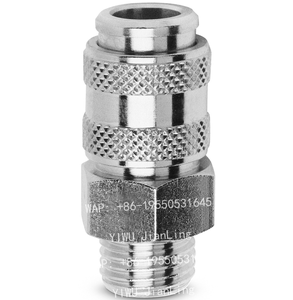
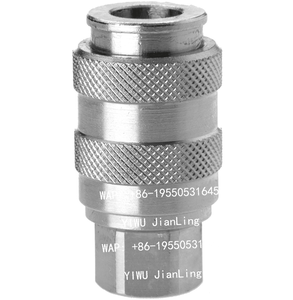
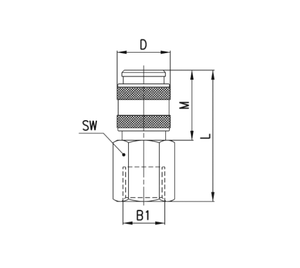


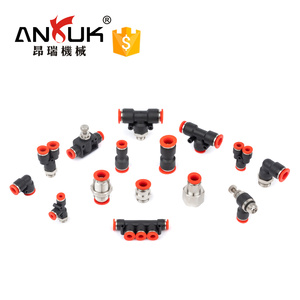



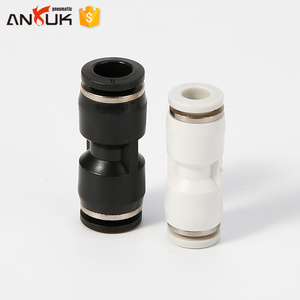


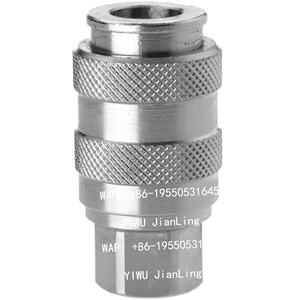



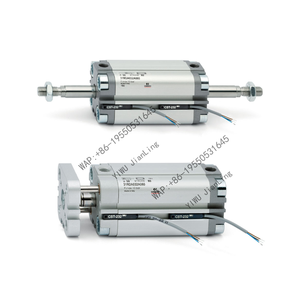






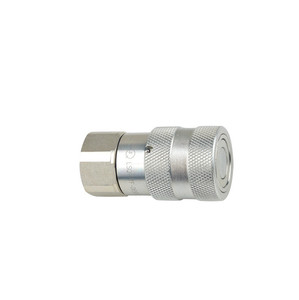










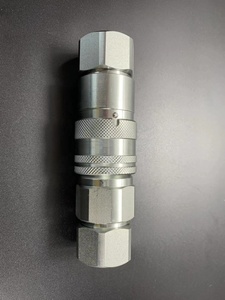
Hydraulic couplings are devices meant for the transmission of power from one rotating element to another. Couplings can, therefore, be split into several types based on the configuration of their components. These component configurations are especially important in determining the nature of the coupling when hydraulic fluids are applied. Here are the usual types of flat hydraulic quick couplings.
These are usually operated by hand, whereby locking and unlocking must be done manually. This is an advantage because manual couplings can be very precise. The control that manual coupling affords can be beneficial in delicate operations that require careful handling. However, it should be noted that manual couplings often take longer to operate than automatic ones. They are handy in situations where precision, not speed, is usually required.
These are the types of couplings that shut off (stop the flow of fluid) at one end (the 'supply' side) during disconnection. The 'return' side can still have fluid passing through it. While not hermetically sealing (blocking all potential fluid pathways, that is), these couplings can still help reduce the overall risk of cross-contamination. In industries like food or pharmaceuticals, this feature is crucial.
Couplings that shut off both ends are often referred to as 'double shut-off' couplings, and these are the ones that also shut off the return line during disconnection. With these, both sides of the coupling are sealed off. This means that there is no possibility of fluid escaping from the system. This makes them ideal in situations where cross-contamination must be avoided at all costs.
These locking mechanisms are different types of locking mechanisms while the basic operation principles remain the same. These mechanisms include ball locks, pin locks, and taper locks, to mention but a few. Each of the locking mechanism types offers specific strength and vibration resistance, and they are differentiated by their locking configurations. The decision on which ones to use will depend on the application's operational requirements.
These are used to accommodate misalignments between the connected components. This is because they feature a 'floating' mechanism. This floating mechanism often features a ball-and-socket or socket-and-socket design that allows some degree. In addition to this, floating couplings reduce wear and tear and enhance the viability of the connected components.
Hydraulic systems provide power in industrial applications and allow for the generation of forceful movement in machine components. Quick couplings enable users to connect fluid lines quickly and easily. That is what makes quick couplings so vital in industries that are constantly changing or require frequent maintenance. Particularly, hydraulic quick couplings are valued for their leak-free and low spillage features when connecting and disconnecting hydraulic lines. Below are some of the common applications of a flat face hydraulic quick coupling.
Used in the construction industry especially on heavy equipment, hydraulic systems power attachments such as buckets, drills, and lifts. Quick couplings allow easy swapping of attachments based on the task requirements. They also enable contractors to quickly connect or disconnect hydraulic lines for repairs or maintenance for minimum downtime on their equipment. Consequently, this leads to increased productivity in the performance of construction tasks.
Quick couplings are employed to manage the high-pressure cooling systems, hydraulic systems, and fuel systems prevalent in this sector due to the demand for pressure and durability. In such extreme conditions, the coupling must be robust enough to withstand dust, heat, and vibration, among other harsh mining environments. These durable couplings provide efficient operation and quick changes in hydraulic systems. This is crucial for maintenance in mining operations that are continuously running.
In agriculture, hydraulic systems in tractors and other implements enable lifting, plowing, and mowing, among other tasks. That is where couplings come in handy as they enable farmers to easily connect and disconnect hydraulic lines on their equipment. This is especially important when using multiple attachments on a tractor for different tasks on a farm. The efficiency of quick couplings helps in the mastication of agricultural practices.
For instance in manufacturing, flat face hydraulic couplings find a variety of uses from machines operated via hydraulics, automated systems, or even in positioning. Additionally, a coupling's smooth design helps to reduce the likelihood of fluid spillage during disconnection. This is crucial in areas where contamination was mentioned above in the food processing industries. They also help to reduce downtime by allowing easy connection or disconnection of lines for machine maintenance in the manufacturing industry.
The industry where flows are controlled and tools are powered by hydraulics is no exception either. Users in this industry often rely on couplings for high pressure and extreme environment sealing. For sub-sea operations, these couplings must be extremely reliable since the operations are deep under the ocean and commercially risky. Double shut-off couplings are particularly important in this industry because they can prevent cross-contamination.
Marine vessels rely on hydraulic systems for various operations from propulsion to deck machinery and heavy cargo handling. Couplings must withstand extreme marine environments and the pressures involved. Given the marine industry's reliance on these systems, durability, and quick couplings' sealing capability for fluid leakage and water ingress are crucial.
Many factors have to be considered and compared when selecting a hydraulic coupling. The following is a list of these specifications:
Working Pressure
The working pressure is basically the maximum pressure that the coupling can handle during normal operation. This is because working pressure is the factor that largely determines a coupling's suitability for a specific application. Higher working pressures are needed for high-pressure hydraulic systems than lower ones.
Material/Corrosion Resistance
Quick couplings found in hydraulic systems are often exposed to harsh environments and chemicals, so they must be made from materials that can endure these. Most commonly, stainless steel or zinc-plated steel couplings are used because of their exceptional resistance to corrosion. Moreover, specific coatings may be required in marine or chemical processing industries.
Seal Type
In hydraulic systems, seals play a critical role because they ensure no fluids escape the system. However, not all seals are created equally. For instance, O-rings and V-rings are the most frequently used seals in flat face couplings because they are relatively easy to install and replace. Nevertheless, PTFE and composites offer better chemical resistance and durability.
End Configuration
This is where coupling compatibility with the connected hydraulic components comes in. Various ends can be used, such as NPT, BSP, or JIC threads. These end configurations often depend on the system's hose or pipe requirements where the coupling will be installed.
Heat Resistance
Heat can lead to the degradation of seals and even coupling materials if hydraulic systems are operated in high-heat environments. This is why heat resistance is an important specification for these couplings in such industries as mining and oil and gas. The ability to withstand high temperatures ensures long-term functionality without failure.
Installation
Coupling and component surfaces to be mated have to be thoroughly cleaned upon installation. This is because any dirt or debris can damage seals or affect the coupling's performance. Before connecting the coupling, ensure that the components it will interact with are well lubricated with the appropriate hydraulic fluid.
Connection
To couple hydraulic connectors together, align them properly. Into one another, they should slide without forcing. Rotating the coupling may be necessary for proper alignment. After the connectors are aligned, ensure they are locked securely by following the manufacturer's locking mechanism.
Operational Checks
This is simply where one has to conduct a pressure test after the coupling is connected. This is done to confirm the coupling's integrity. During this test, one has to keep an eye out for leaks as these signify seal failure.
Maintenance
It has to be noted that regular maintenance goes a long way in ensuring the long life of hydraulic couplings. Lubricating seals periodically helps to reduce wear and tear and thus prolong the coupling's life. Also, it is important to inspect the coupling regularly for signs of wear, such as cracks or deformation. Furthermore, replace worn seals and couplings as soon as possible.
The quality of hydraulic quick couplings greatly impacts the operational efficiency and safety of the systems in which they are installed. When it comes to selecting these couplings to use, factors such as material, seal, and design must be considered above. Maintenance no longer becomes periodic checks or replacements but becomes a proactive strategy that includes selecting high-quality components.
So, what exactly is considered high-quality hydraulic couplings? The first one is the material. The best hydraulic quick couplings should be made from high-quality, durable materials such as stainless steel or other alloy steel with high wear resistance. They possess exceptional strength and can withstand extreme temperatures and pressures, especially in demanding environments like oil and gas, mining, and construction.
Then, high-quality couplings will have seals made from premium materials like nitrile or Viton (FKM) and rated not just for hydraulic fluids but for extreme temperatures. Pay attention to the seal design as well. Seals designed in an 'exclusion' style will prevent contaminants from entering the system. One will find that it offers better protection against failures in hydraulic systems.
Finally, producing hydraulic couplings in a facility that adheres to internationally recognized quality assurance standards (ISO, SAE) is advisable to ensure that the products meet the required quality criteria. To understand the performance capabilities of a coupling, the manufacturer should make available all relevant technical documents, such as data sheets, material certifications, and test reports.
Maintenance is an important part of extending the life of hydraulic couplings. Some of the common maintenance practices include the following:
It should be noted, though, that while maintenance can extend the hydraulic couplings' life, some factors in the operational environment are often unavoidable. That is why it is crucial to always select the right coupling for the application.
The coupling plates are fabricated with a completely flat sealing surface. The connection results in a parallel configuration that minimizes turbulence and fluid agitation. This feature not only enables efficient fluid transfer but, more importantly, reduces the likelihood of leaks. This is especially important in industries that consider leakage to be very detrimental, such as food processing.
These couplings are rated for high pressures, so they are quite suitable for use in such systems. However, the coupling must be Selected correctly not to exceed its rated working pressure. This is to say that pressure rating is a crucial consideration when using these couplings in any application.
Some of these signs include significant leaks, visible wear and tear, and poor system performance. There can also be overheating when one suspects that the coupling might be damaged. Wear and tear can be determined through regular inspections. Furthermore, one may monitor performance by keeping an eye out for the above-mentioned signs. Once they are discovered, the couplings should be replaced as soon as possible.
Materials used to manufacture these couplings must possess excellent resistance to wear and tear. These materials are often subjected to extreme temperatures, hydraulic fluids, and sometimes even corrosive chemicals. These materials include stainless steel, zinc-plated steel, or brass models. Stainless steel is resistant to corrosion and, thus, the most durable material. On the other hand, zinc-plated steel provides a cheaper alternative with moderate corrosion resistance, while brass offers good corrosion resistance.
Hydraulic couplings require some form of maintenance to extend their life and maintain their functionality. They should be cleaned after every disconnection and lubricated to reduce friction after connection. Furthermore, inspections should be done for any signs of wear and tear. Lastly, routine performance monitoring helps to address potential issues before they become serious problems.